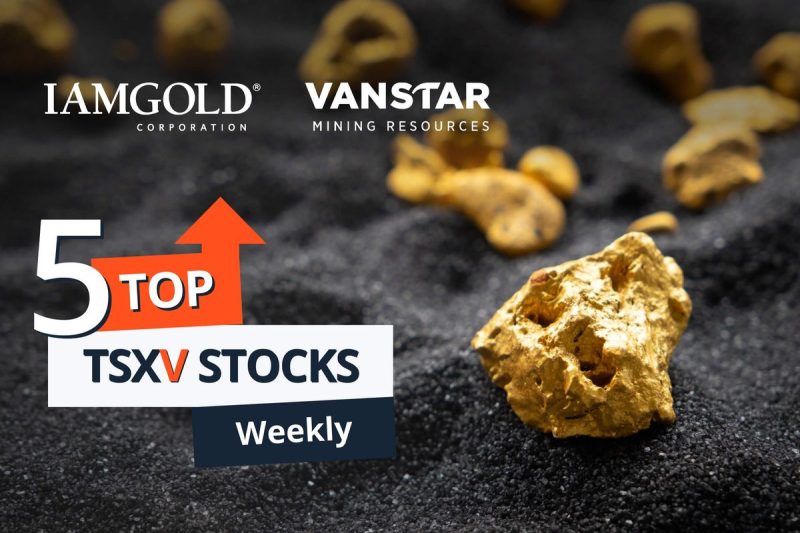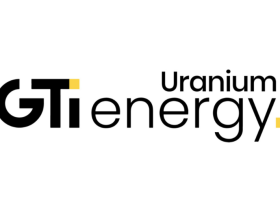The S&P/TSX Venture Composite Index (INDEXTSI:JX) fell slightly, losing 8.76 points last week to close at 537.50
Markets ended higher this past Friday as the November jobs report showed continued resilience in the labour market, adding 199,000 new jobs and pushing the unemployment rate down to 3.7 percent. The numbers give further support that the U.S. economy is on track for a soft landing as it inches closer to its inflationary target of 2 percent.
Meanwhile, the Bank of Canada maintained the benchmark rate at 5 percent. In its statement, the bank cited a 1.1 percent contraction in the GDP and a modest rise in unemployment, which in turn is reducing pressures from inflation. It also stated that it would like to see further and sustained easing in inflation.How has all this impacted the mining sector? Take a look at the five best-performing stocks this past week on the TSXV.
How has the stronger-than-expected economy been translating for small-cap resource stocks? Keep reading to find out which companies on the TSXV have performed best this past week.
1. Guardian Exploration (TSXV:GX)
Weekly gain: 183.33 percent; market cap: C$16.65 million; current share price: C$0.17
Guardian Exploration is an oil, gas and mineral exploration company. Its primary asset is the Mount Cameron silver, lead and zinc project located within the Mayo mining district in the Yukon, Canada. It also holds mineral claims on Southern Dall Island in southeast Alaska.
Guardian saw strong gains in share price last week following the announcement on Tuesday (December 5), when it reported its intent to acquire all of the shares of Site Exploration, a Saudi Arabian mining company. The deal would give Guardian access to five prospects that cover 328 square kilometers, with rights to an additional 30 mineral prospects at various stages of licence application and approval. The prospects are focused on the exploration of gold, base and battery metals.
Under the agreement, Guardian would pay $300,000 along with 15 million common shares and would pay an additional $50,000 and 500,000 shares for each additional license approved for the site.
2. Triumph Gold (TSXV:TIG)
Weekly gain: 47.27 percent; market cap: C$14.435 million; current share price: C$0.405
Triumph Gold is a junior exploration and development company focused on developing land packages in the Yukon and British Columbia, Canada. Its three properties in the Yukon are all within the Dawson Range and consist of its flagship Freegold Mountain project, which has 20 identified mineral resources hosting gold, silver, copper, molybdenum, lead and zinc deposits; The Tad/Toro copper, gold and molybdenum; and the Big Creek copper and gold project. Its property in Northern British Columbia is Andalusite Peak.
The most recent news from the company came on November 20, when it released highlights from exploration at its Tad Toro and Big Creek properties. The program was focused on refining gold targets at the sites and showed 12 of 185 soil samples with over 5 g/t silver at Tad Toro and five consecutive samples of greater than 1 g/t silver at Big Creek.
The company has released no further news and reached a year-to-date high of C$0.405 this past Thursday (December 7)
3. Vanstar Mining (TSXV:VSR)
Weekly gain: 39.53 percent; market cap: C$36.57 million; current share price: C$0.6
Vanstar Mining is a junior gold exploration company focused on the development of assets in Northern Quebec. Its flagship project is a 25 percent stake in the Nelligan project with the majority 75 percent stake being held by IAMGOLD (TSX:IMG,NYSE:IAG). The property hosts 5.6 million ounces of indicated and inferred resources and consists of 158 mining cells covering 8,216 hectares.
Shares in Vanstar began rising this past Monday (December 4) following the release of results from the summer drilling program at Nelligan. The company said some holes had returned better than average grading and the deposit remains open in all directions, with room for additional expansion. Highlighted intersects included grades up to 3.08 grams per metric ton over 8 meters.
The results were followed by news on Tuesday, that Vanstar had entered into an agreement to be acquired by IAMGOLD. The deal would see a premium valuation for Vanstar of C$45 million.
4. Star Royalties (TSXV:STRR)
Weekly gain: 36.36 percent; market cap: C$26.61 million; current share price: C$0.3
Star Royalties is a precious metals and carbon credit royalty company. It currently holds interests in several mining operations including a 2 percent net smelter royalty from the Elk Gold mine near Kamloops, British Columbia; and a 4 percent gold stream from the Copperstone gold mine in Arizona, United States.
Shares in Star Royalties saw gains this past week following news on Thursday (December 7) that it had closed a strategic investment into Green Star Royalties with Cenovous Energy (TSX:CVE,NYSE:CVE). The agreement would see Star Royalties own 45.9 percent of Green Star, Cenovous and Agnico Eagle (TSX:AEM,NYSE:AEM) would each own 25.9 percent with the remaining 2.3 percent being held by management.
Green Star is a venture dedicated to funding nature-based climate solutions within North America and helped to develop the world’s first carbon credit royalties in forestry and regenerative agriculture.
5. Denarius Metals (TSXV:DSLV)
Weekly gain: 34.78 percent; market cap: C$27.53 million; current share price: C$0.465
Denarius Metals is a junior exploration and development company focusing on the operation of its own polymetallic mining projects. Its flagship asset is the Lomero-Poyatos project in Huelva province of Spain. Resource estimates from the site show indicated and inferred reserves of 802,000 ounces of gold, 8,573,000 ounces silver and 61,413 metric tons of copper.
Shares in Denarius were trending up this week following an announcement on Tuesday, that it had entered into an agreement to acquire 50 percent of Rio Narcea Recursos, which owns the rights to the historic producing Aguablana nickel and copper mine in Extremadura, Spain. Denarius executive chairman Serafino Iacono noted the acquisition “accelerates our path to production from our flagship Lomero Project using excess capacity available in Rio Narcea Recurso’s 5,000 metric tons per day processing plant.”
FAQs for TSXV stocks
What is the difference between the TSX and TSXV?
The TSX, or Toronto Stock Exchange, is used by senior companies with larger market caps, while the TSXV, or TSX Venture Exchange, is used by smaller-cap companies. Companies listed on the TSXV can graduate to the senior exchange.
How many companies are listed on the TSXV?
As of September 2023, there were 1,713 companies listed on the TSXV, 953 of which were mining companies. Comparatively, the TSX was home to 1,789 companies, with 190 of those being mining companies.
Together the TSX and TSXV host around 40 percent of the world’s public mining companies.
How much does it cost to list on the TSXV?
There are a variety of different fees that companies must pay to list on the TSXV, and according to the exchange, they can vary based on the transaction’s nature and complexity. The listing fee alone will most likely cost between C$10,000 to C$70,000. Accounting and auditing fees could rack up between C$25,000 and C$100,000, while legal fees are expected to be over C$75,000 and an underwriters’ commission may hit up to 12 percent.
The exchange lists a handful of other fees and expenses companies can expect, including but not limited to security commission and transfer agency fees, investor relations costs and director and officer liability insurance.
These are all just for the initial listing, of course. There are ongoing expenses once companies are trading, such as sustaining fees and additional listing fees, plus the costs associated with filing regular reports.
How do you trade on the TSXV?
Investors can trade on the TSXV the way they would trade stocks on any exchange. This means they can use a stock broker or an individual investment account to buy and sell shares of TSXV-listed companies during the exchange’s trading hours.
Data for this 5 Top Weekly TSXV Performers article was retrieved on Friday (December 8) at 1:30 p.m. PST using TradingView’s stock screener. Only companies with market capitalizations greater than C$10 million prior to the week’s gains are included. Companies within the non-energy minerals and energy minerals are considered.
Article by Dean Belder; FAQs by Lauren Kelly.
Securities Disclosure: I, Dean Belder, hold no direct investment interest in any company mentioned in this article.
Securities Disclosure: I, Lauren Kelly, hold no direct investment interest in any company mentioned in this article.





